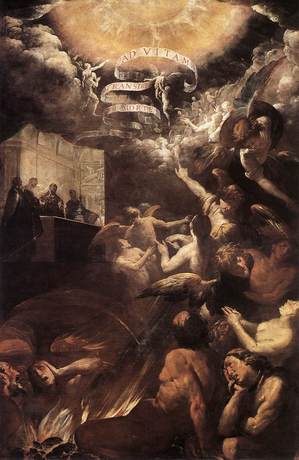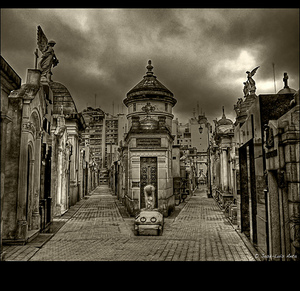Those of us who follow Communion and Liberation already know what is ahead of us for the Year of Faith: we will closely follow the teachings of Pope Benedict for the Year of Faith.
New pope elected … for the Coptic Orthodox Church
 The electors, nearly 2,406 people, in the Coptic Orthodox Church selected the 118th successor to Saint Mark, Tawadros II. The new pope is the head of the Coptic Orthodox Church of Alexandria and Patriarch of All Africa. Until now, Tawadros has been an auxiliary bishop to the Archbishop Pachomius who’s been serving as the acting pope. Tawadros studied pharmaceutical sciences and was ordained a bishop in 1997.
The electors, nearly 2,406 people, in the Coptic Orthodox Church selected the 118th successor to Saint Mark, Tawadros II. The new pope is the head of the Coptic Orthodox Church of Alexandria and Patriarch of All Africa. Until now, Tawadros has been an auxiliary bishop to the Archbishop Pachomius who’s been serving as the acting pope. Tawadros studied pharmaceutical sciences and was ordained a bishop in 1997.
Souls in Purgatory and our obligation
 The month of November is the Month of the Holy Souls in Purgatory. I was thinking after a funeral celebrated earlier today for a friend, Jack, who died last Saturday, about my on-going responsibility for the souls in purgatory. This after being reminded that I am called, as are all the baptized, to be an echo of the encounter with Christ in this world, but also in eternal life. What I do here and now has a direct consequence in the later in the promised Destiny with the Savior.
The month of November is the Month of the Holy Souls in Purgatory. I was thinking after a funeral celebrated earlier today for a friend, Jack, who died last Saturday, about my on-going responsibility for the souls in purgatory. This after being reminded that I am called, as are all the baptized, to be an echo of the encounter with Christ in this world, but also in eternal life. What I do here and now has a direct consequence in the later in the promised Destiny with the Savior.
Is it a matter of saying the Lord’s Prayer, Hail Mary and the Glory Be with the Eternal Rest prayers around the time of a person’s death, or only on the anniversary of death of a loved one or friend? Somehow I doubt it.
The law of charity that I think Christians are called to live with certainty makes a claim on us to pray for the dead and dedicate some portion of prayer, fasting and almsgiving for the Church Suffering (the Holy Souls) so that one day they become part of the Church Triumphant. Being Friends in the Lord (disciples of Christ) can’t be indifferent to those who have died. We believe that the bonds of love don’t unravel with the death of the body. We promise the dying that we won’t forget them. If this is true, then why do we so often forget to have a Mass offered for their intentions, or say a rosary for our loved ones, or absent ourselves from visiting the cemetery? Mass, the rosary and a visit are concrete acts of love that have a real consequence for real people we knew and loved in this life.
Consider the image of posted above is a example of spiritual works effecting the soul of another. Here the Baroque Master Giovanni Battista Crespi, “Il Cerano” (1573-1632) paints in 1617 Saint Gregory the Great “delivering the soul of a monk.” The deliverance is the result of the monk and pope Gregory offering Mass for the soul of a monk. The depths of mercy and love are mined by the devotion of the Mass for another.
What does the Church teach about Purgatory?
In the Catechism of the Catholic Church states:
Paragraph 1030: All who die in God’s grace and friendship, but still imperfectly purified, are indeed assured of their eternal salvation; but after death they undergo purification, so as to achieve the holiness necessary to enter the joy of heaven.
Paragraph 1031: The Church gives the name Purgatory to this final purification of the elect, which is entirely different from the punishment of the damned. The Church formulated her doctrine of faith on Purgatory especially at the Councils of Florence and Trent. The tradition of the Church, by reference to certain texts of Scripture, speaks of cleansing fire. As for certain lesser faults, we must believe that, before the Final Judgment, there is a purifying fire. He who is truth says that whoever utters blasphemy against the Holy Spirit will be pardoned neither in this age nor in the age to come. From this sentence we understand that certain offenses can be forgiven in this age but certain others in the age to come.
Paragraph 1472 excerpted: This purification frees one from what is called the “temporal punishment” of sin.
For more on purgatory you can read here.
The Holy Souls in Purgatory. Purgatory has been described, as a “cleansing fire” that burns away the dross of sins on our souls. Saint Paul wrote those of being saved “yet so as through fire” and whether or not the soul endures a literal fire, its purification does involve suffering. The time each soul spends there, and the severity of the pains it experiences, varies. However, our prayers for these souls can help alleviate their sufferings and help them reach heaven more quickly. Although they can no longer pray for themselves, they can and do pray for us as well out of gratitude! In addition we can help them by having masses said for the departed and by engaging in works of cha
rity and sacrifice on their behalf.
All Souls
For more than a 1000 years Holy Church has remembered all the dead on one day and reminding the faithful what we believe in the death and resurrection of Jesus and thus for those who die in grace. Spend some time with the Mass Collect below. It is not merely remembering the dead, as good as it is, but also to hold fast to the faith we are Baptized into: Christ’s death and resurrection.
As a way of entering into what the Lord desires, the Church formed the All Souls Indulgence. Read about it here. You have until November 8 to observe the conditions of the Indulgence.
God, who has raised Jesus from the dead, will give life also to your mortal bodies, through his Spirit that dwells in you.
With the Church we pray,
O God, who willed that your Only Begotten Son, having conquered death, should pass over into the realm of heaven, grant, we pray, to your departed servants that, with the mortality of this life overcome, they may gaze eternally on you, their Creator and Redeemer.
Francis Arinze, Nigerian cardinal, turns 80
 His Eminence, Francis Cardinal Arinze, turns 80 today.
His Eminence, Francis Cardinal Arinze, turns 80 today.
- Ordained priest: 23 November 1958 (54 yrs)
- Ordained bishop: 29 August 1965 (47 yrs)
- Created cardinal: 25 May 1985 (27 yrs).
Continue reading Francis Arinze, Nigerian cardinal, turns 80
Voices without a vote
As a matter of good citizenship, as a concern for faith and public order, for faith and reason, you and I need to vote according to a fully formed conscience.
New life in a New England seminary
 The heart of a diocese is a seminary (or a seminary program if a diocese doesn’t have a major seminary formation program). No would have guessed 10 years following the sex abuse crisis erupted in the Archdiocese of Boston, that Saint John’s Seminary would see new life in forming men to be Catholic priests. Patrick Doyle wrote a very descent article for the Boston Magazine titled “Resurrection” on the uptick of the call to priesthood and good work of the Boston seminary.
The heart of a diocese is a seminary (or a seminary program if a diocese doesn’t have a major seminary formation program). No would have guessed 10 years following the sex abuse crisis erupted in the Archdiocese of Boston, that Saint John’s Seminary would see new life in forming men to be Catholic priests. Patrick Doyle wrote a very descent article for the Boston Magazine titled “Resurrection” on the uptick of the call to priesthood and good work of the Boston seminary.
What is a Holy Day?
 For Catholics it is Sunday, not the Sabbath (Saturday) in the technical sense as it applies to Jewish theology, but it is the day of worship of the One Triune God in the Triumph of death by death itself; it is Sunday which commemorates the Resurrection of Jesus, that is the fulfillment of the Paschal Mystery (life, death, Resurrection and Ascension of the Lord). Sunday is the perpetual Day of the Lord in practice.
For Catholics it is Sunday, not the Sabbath (Saturday) in the technical sense as it applies to Jewish theology, but it is the day of worship of the One Triune God in the Triumph of death by death itself; it is Sunday which commemorates the Resurrection of Jesus, that is the fulfillment of the Paschal Mystery (life, death, Resurrection and Ascension of the Lord). Sunday is the perpetual Day of the Lord in practice.
Pope Benedict’s prayer intentions for November 2012
 Praying with and for another expands our life, it gives us a new point of view. This is especially true when we unite ourselves in prayer with the monthly prayer intentions published by the Apostleship
Praying with and for another expands our life, it gives us a new point of view. This is especially true when we unite ourselves in prayer with the monthly prayer intentions published by the Apostleship
of Prayer, and published here on the Communio blog on first day of the month.
be consider as the Pope’s personal prayer group. Blessed John Paul II wrote in
1985 of the Apostleship of Prayer as “a precious treasure from the Pope’s heart
and the Heart of Christ.” Since 1844, the Apostleship has been a work of the
Society of Jesus and there are some 50 million apostles praying with and for
the Holy Father. Consider joining the Apostleship of Prayer by visiting the link above.
the Gospel may bear the courageous witness of fidelity to the crucified and
risen Lord.
light to the nations.
you for the Church.
All Saints
 Let us all rejoice in the Lord, as we celebrate the feast day in honor of all the Saints, at whose festival the Angels rejoice and praise the Son of God. (Entrance Antiphon for Mass)
Let us all rejoice in the Lord, as we celebrate the feast day in honor of all the Saints, at whose festival the Angels rejoice and praise the Son of God. (Entrance Antiphon for Mass)


